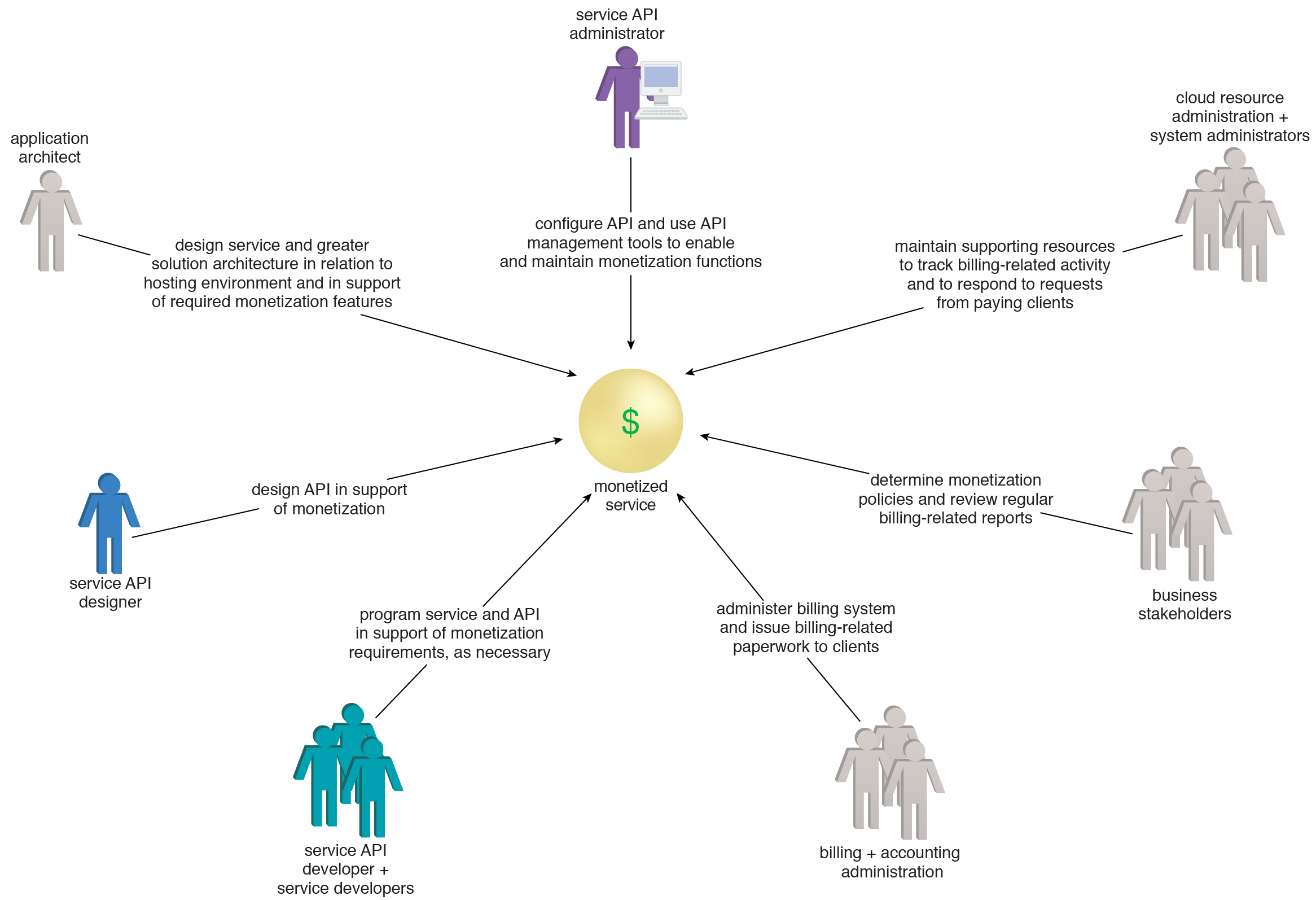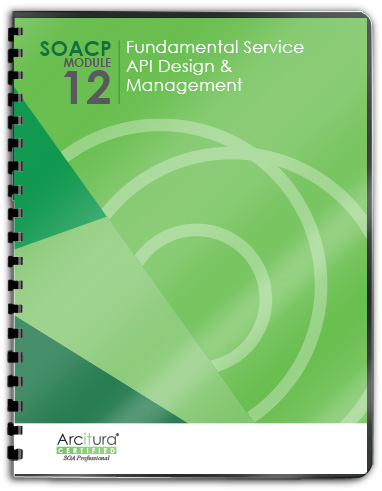Service API Patterns, Protocols, Coupling Types, Metrics > Service API Management Patterns > Service API Monetization
Service API Monetization
How can a service be positioned to generate revenue?
Standard API administrative practices may be unable to support services developed for the purpose of generating revenue from external service consumers and end-users.
For organizations that publish services that are made available to service consumers in exchange for monetary payment, the responsibilities of API design and management need to extend to the enablement and management of service API monetization features. To accomplish this, a number of project team members need to be involved to fulfill roles associated with the lifecycle of required monetization functions.

In addition to roles associated specifically with the service API, the delivery and management of monetization functions can involve several other roles both within and outside of the IT project team.
There are a number of different monetization models used by organizations, depending on the nature of the functions and features provided by the service and the business goals pertaining to revenue generation.
The following are common monetization models:
- Dedicated For-Profit Service API
- For-Profit Service API Add-On
- Free Service API
The following are common payment models, associated with the aforementioned monetization models:
- Pay-Per-Use
- Subscription
- Revenue Sharing
- Commission
Different payment models can be used together or separately with a given monetization model.
This pattern is covered in Module 12: Fundamental Service API Design & Management..
For more information regarding service API design & management courses and accreditation, visit the Service API Specialist program page.
